Russian missiles and drones attack Ukrainian cities every day, leaving behind ruins, victims, and human grief. Each such crime needs to be documented – as a testimony for the world and future generations. Photojournalists risk their lives to record the truth about the russian aggression against the civilian population of Ukraine.
Yan Dobronosov, an experienced photojournalist and photo correspondent for the Telegraph newspaper, told the National Union of Journalists of Ukraine (NUJU) information service about these and other challenges. During the years of war, he became a witness and participant in changes not only in the profession of photojournalist itself but also in society’s perception of the work of those who document tragic events.
“The sky is “buzzing” with drones”
The first thing that catches the eye is the need for increased caution. The russian occupiers systematically use the tactic of double strikes – they repeatedly shell the same places after a certain time, counting on the arrival of rescuers, journalists, and civilians. This brutal strategy has forced photojournalists to radically reconsider their approaches to security.
“Photographers cannot stay at the scene of the incident for a long time; they have to work quickly and be ready for immediate evacuation. Every minute at the scene of the shelling could be the last,” says Yan Dobronosov.


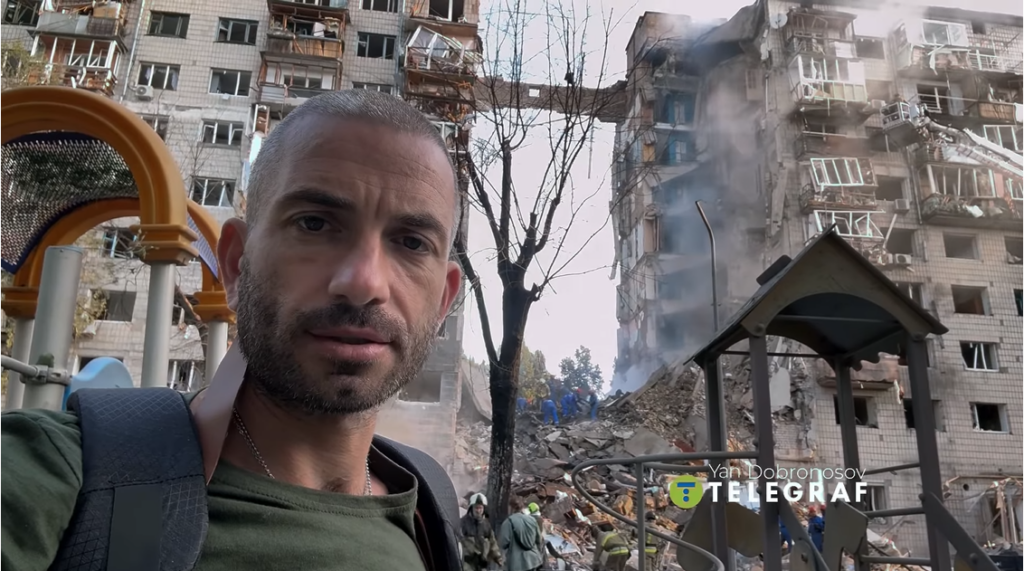
The second important aspect concerns the fundamental change in the nature of the fighting.
“If, at the beginning of the war, photojournalists could still work relatively close to the front line, taking advantage of breaks in artillery shelling, then the era of FPV drones has made this practically impossible,” says our interlocutor. “Kamikaze drones can attack at any moment. The sky is constantly “buzzing” with drones, and this creates an atmosphere of permanent threat.”
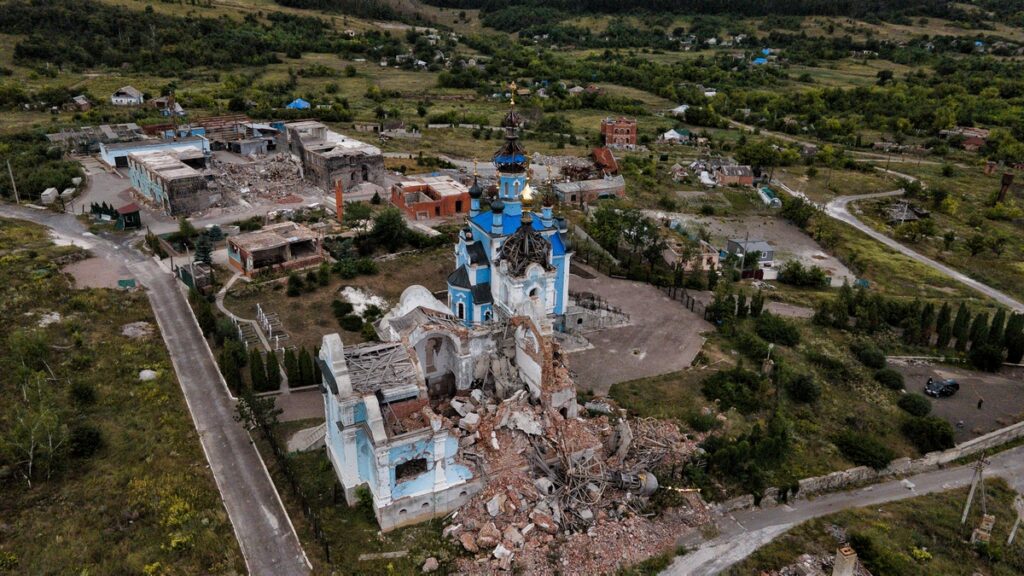
The photographer says that it has been a long time since he was at the so-called “ground zero” “directly at the contact line, which was previously a common practice for war correspondents.
The third painful aspect is the transformation of public attitudes towards photographs from the sites of tragedies. Yan Dobronosov recalls the scandals that arose around the publication of certain images, in particular photographs from burials. What was previously perceived as normal journalistic practice can now cause sharp criticism.

Showing the truth without causing additional trauma
Interacting with people in their moments of greatest grief is one of the most difficult aspects of a photojournalist’s work. Reactions to the photographer’s presence are extremely diverse – from complete understanding to open hostility. Some allow themselves to be photographed without further ado, while others ask questions about the purpose of the shooting and may request to see documents certifying their journalistic status. Some people simply do not pay attention to the camera, immersed in their grief. And some do not understand why it is necessary to film at such moments at all.
“This forces journalists to constantly balance between the professional duty to document events and respect for people’s privacy in a moment of grief,” the journalist notes. “I think that the priority should be on the side of documenting events: according to psychologists, visual information (and photography is precisely visual information) affects consciousness the most. Remember “What do you remember about the russian bombing of Syrian Aleppo?.. First of all,” the view of the bombed city from the photographs that were circulated by the world media…”
At the same time, Yan Dobronosov clearly understands the need for ethical boundaries in his work. He always keeps his distance so as not to disturb people in difficult moments. He uses long-focus lenses that allow him to film without invading private space. In addition, he deliberately avoids publishing particularly traumatic images. The primary principle of his work is to reveal everything that can be revealed without causing additional harm to people.
Over the years of working in war conditions, Yan Dobronosov witnessed many tragedies, each of which left a mark on his memory. Among the recent events, the shelling of Kyiv’s Sviatoshynskyi Microdistrict on April 24, 2025, where 12 civilians died in a matter of seconds, was especially memorable. Dobronosov worked at the scene of the tragedy both day and night, documenting the scale of the destruction and the people’s grief. He was especially struck by the reaction of Kyiv residents – the huge number of flowers that people brought to the scene of the tragedy and photographs of the dead. This spontaneous memorial action demonstrated how society experiences every loss and how valuable every life is.
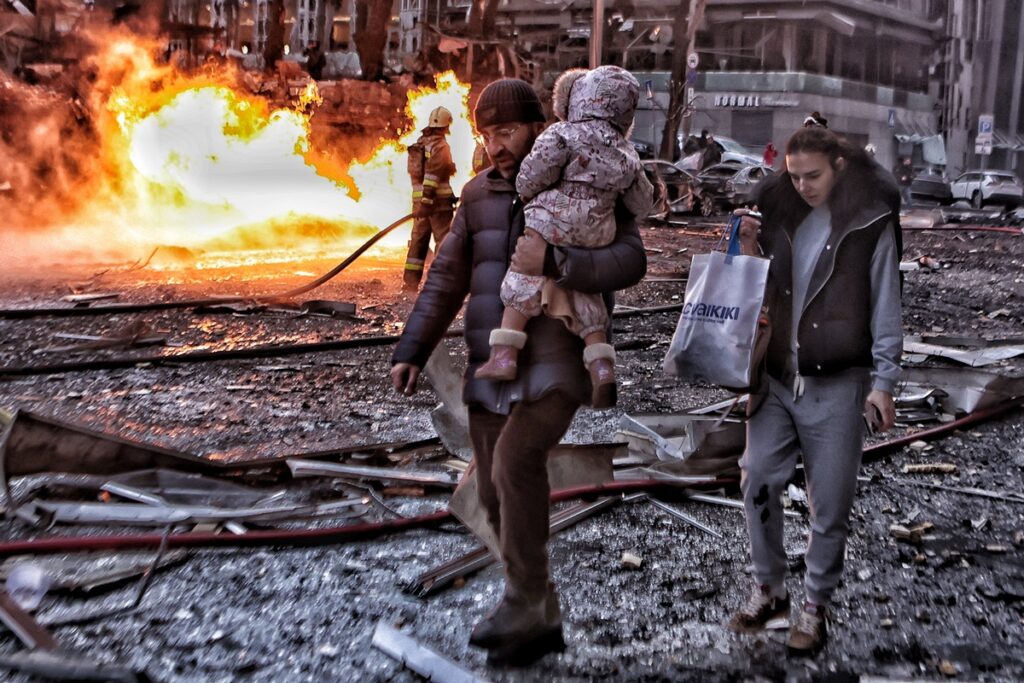
Separately, Yan Dobronosov recalls the strike on the Okhmatdyt Children’s Hospital, a targeted attack on children, which the photographer called an “absolute atrocity.” This tragedy became a symbol of the cynicism of russian aggression,” a blow to the most vulnerable members of society, to the future of the nation.
“Working at Okhmatdyt was especially difficult because of the number of personal tragedies that unfolded simultaneously. Each family had its own story of loss, its own drama,” says the photographer. “It was simply trash in terms of the emotional shock from the amount of grief in one place.”
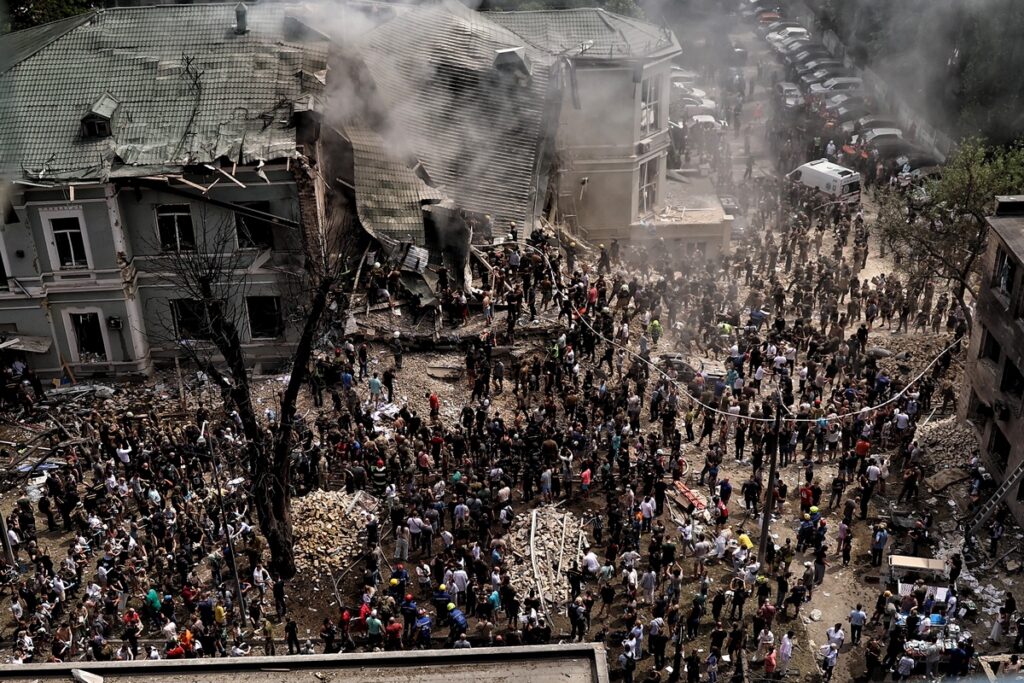
“Nomadic Lifestyle” by Yan Dobronosov va
Our interlocutor, as he notes, “leads a nomadic lifestyle,” constantly moving between different cities of Ukraine. His work routes cover Kramatorsk, Kharkiv, Kyiv, and other settlements, and his experience shows the painful reality that there are practically no safe places left in Ukraine.
“I no longer understand where it is more dangerous and where it is relatively calmer. Kharkiv suffers from constant shelling; in Kramatorsk, it is impossible to sleep properly due to regular alerts; Kyiv is also under attack all the time, and Odesa is definitely not a safe place. This reality shows that russian aggression has affected the entire territory of Ukraine,” the photojournalist notes.
So, Yan Dobronosov plans his work not according to the principle of “where it is safer” but according to the principle of “where events that need to be documented take place.” Professional duty forces him to go to places where there are many risks, but also a great need for photo fixation.

According to the photographer, the spirit of the Ukrainian people is best conveyed by several types of subjects. Firstly, these are evacuation stations – places where divorce dramas unfold, but at the same time, organization and mutual assistance are demonstrated.
Secondly, there are various support actions, in particular, events in support of Ukrainian prisoners. These actions show that society does not forget about those who were captured by russian forces and continues to fight for their release.
Thirdly, these are operational photographs from the sites of shelling, which demonstrate both the cruelty of the aggressor and the speed of response of Ukrainian rescue services.

The work of photojournalist Dobronosov is striking in its contrasts. On one day, he can go on an official business trip with government officials on a specially equipped Matrix train” a kind of “limousine on railway tracks.” And the next day,” to get from Kramatorsk to Kyiv, traveling in the trunk of a Mercedes, because there were no other free seats, but you must definitely be in the capital the next morning.
Two main themes: the horrors of war and the resilience of Ukrainians
One of the important professional traits of an experienced photographer is the ability to instantly notice something significant that others may overlook. This skill develops over the years and becomes instinctive.
“For example, among the crowd of passengers at the station, a dramatic scene of a soldier saying goodbye to his family or a meeting after a long separation takes place – someone’s personal moment of happiness or sorrow. Ordinary people pass by, focused on their own business —finding a taxi, carrying their bags, catching the train. The photographer instantly reacts to such moments, understanding their value in human history. This does not mean intrusion into privacy; rather, it is the ability to capture an emotion that tells about the time in which we live,” says the photojournalist.
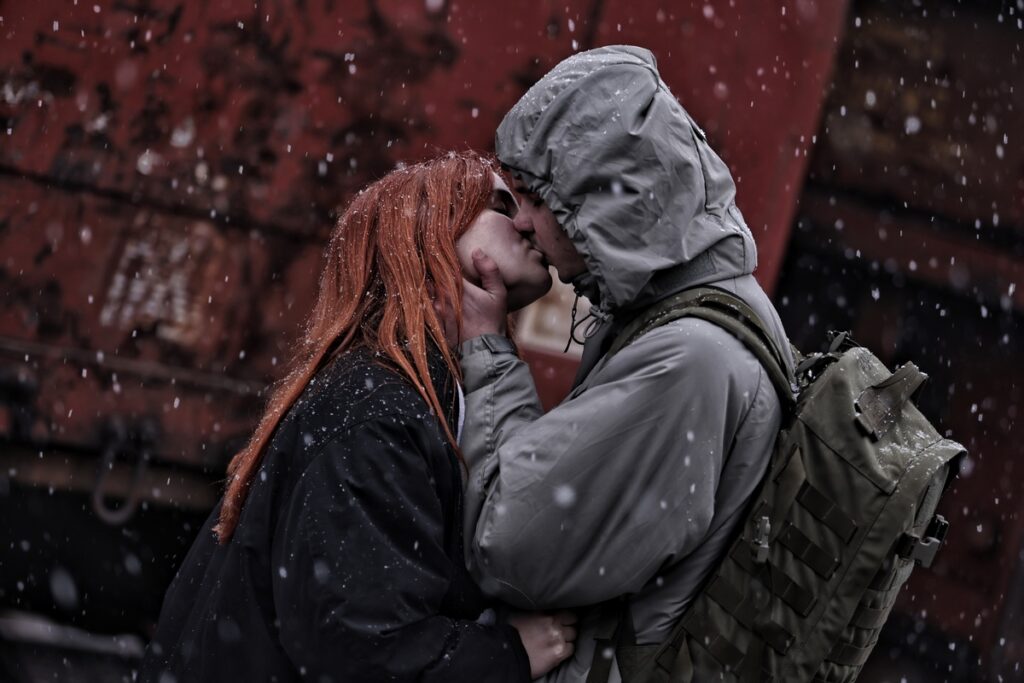
Modern technologies allow us always to be ready to capture important moments. Yan Dobronosov constantly carries a professional camera with him but also uses the capabilities of modern smartphones. He assesses which tool is best to use for a particular scene, depending on the lighting and the dynamics of the event. This technical readiness is combined with a developed professional sense, which enables one not to miss an important frame, even in everyday situations.
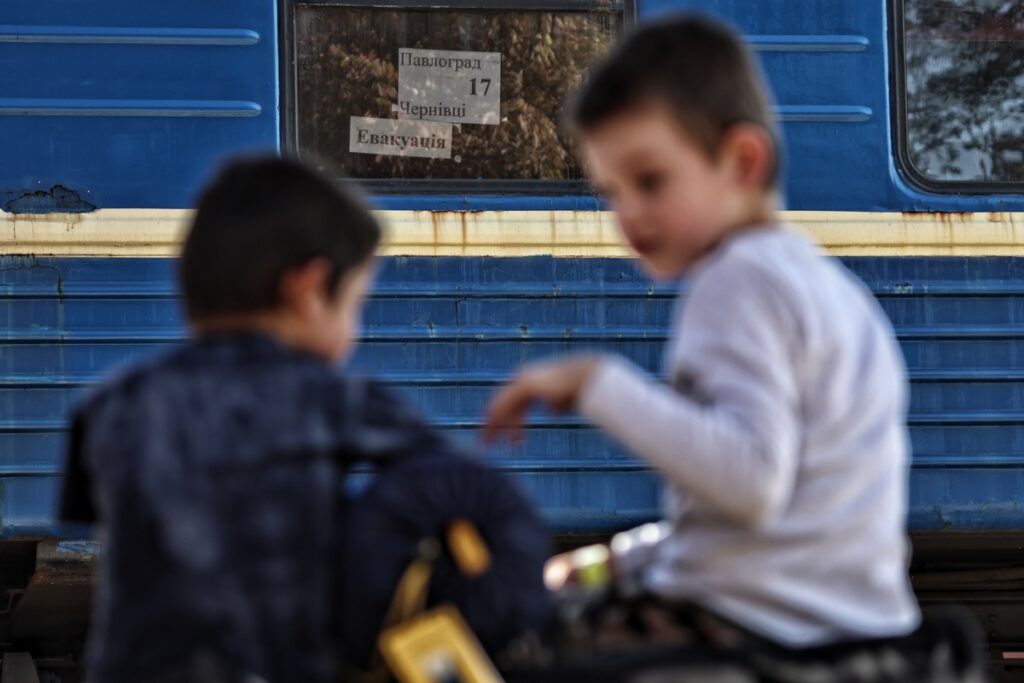
In Yan Dobronosov‘s work, two main themes are clearly identified, which complement each other: the horror of war and the resilience of Ukrainians. The photographer considers both aspects to be equally important for creating a complete picture of what is happening in Ukraine.
Genuine human emotions, especially in times of war, move him deeply. Yan Dobronosov notes a paradoxical pattern: war has made human relationships more genuine, devoid of the falsehood that often pervades peacetime.

“Scenes of farewells and meetings at train stations, in military units, and at airports become especially valuable as human documents of the era. People do not play with emotions and do not try to look better. They simply experience true feelings in conditions of uncertainty,” says the photojournalist.
When Yan Dobronosov photographs such moments, he always offers to send pictures. The reaction is always positive – people understand that these photos can become the only memories of important moments in their lives.
For military personnel and their families, such pictures hold special value because they may be separated for an indefinite period. The photograph becomes not just a journalistic material but a personal treasure for a particular family.

Yan Dobronosov distinguishes between different types of shooting based on emotional impact. Photographing sincere human emotions – farewells, meetings, moments of support” evokes positive feelings, even if the situation itself is sad.
Working in areas of shelling is perceived in a completely different light. There, the emotional load is much heavier; the work becomes more mechanical and professional. The photographer tries to work technically well, and emotional understanding occurs later when the immediate danger has passed.
Yan Dobronosov views one of the most important functions of his work as informing the world community about the true state of affairs in Ukraine. It is especially important to refute the illusions about a possible “truce” or a lull in the conflict.
“Constant statements about negotiations, possible agreements, and ceasefires can create a false impression among people who do not live in conditions of war. And, of course, there are much more such people in the world than those who directly experience russian aggression. It is very important to show the world that there is no truce here, that the russians are simply continuing to destroy us,” emphasizes Yan Dobronosov.
Operational photos from the places of russian shelling have the highest “useful effect coefficient” for an international audience. They show that the war does not stop for a single day and that peaceful Ukrainians continue to die from russian missiles and drones.
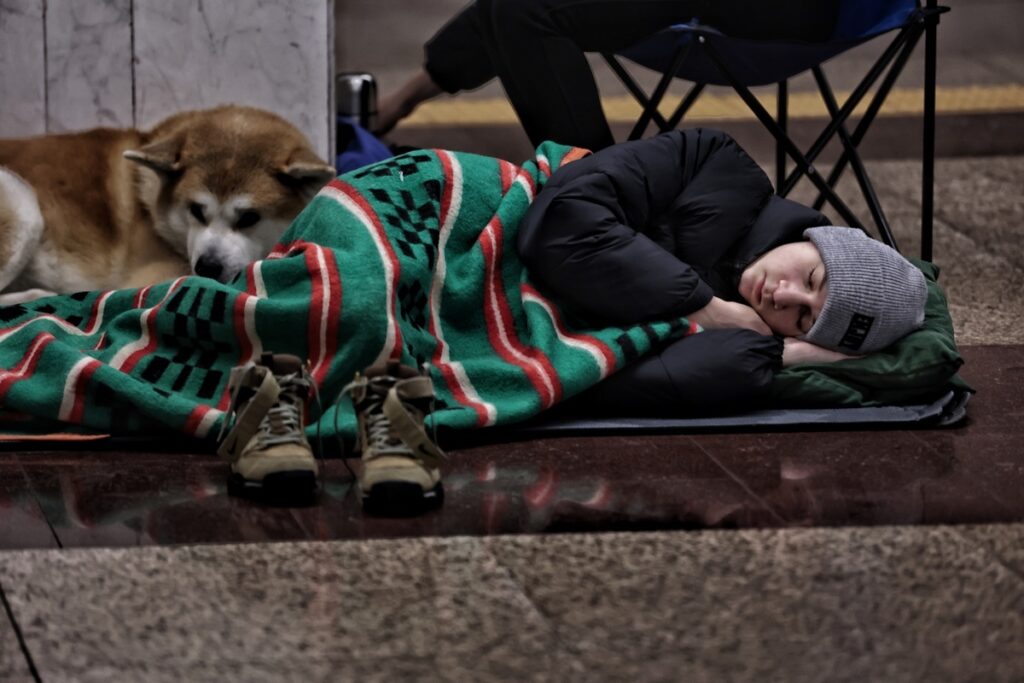
The most important realization is that the war changes all Ukrainians without exception. This transformation is an inevitable part of survival in conditions of constant threat that prevail throughout Ukraine’s territory.
The photographer does not consider himself special in this regard. The war affected every inhabitant of the country, regardless of profession, age, or place of residence. The only difference is how these changes manifest themselves in a particular person.
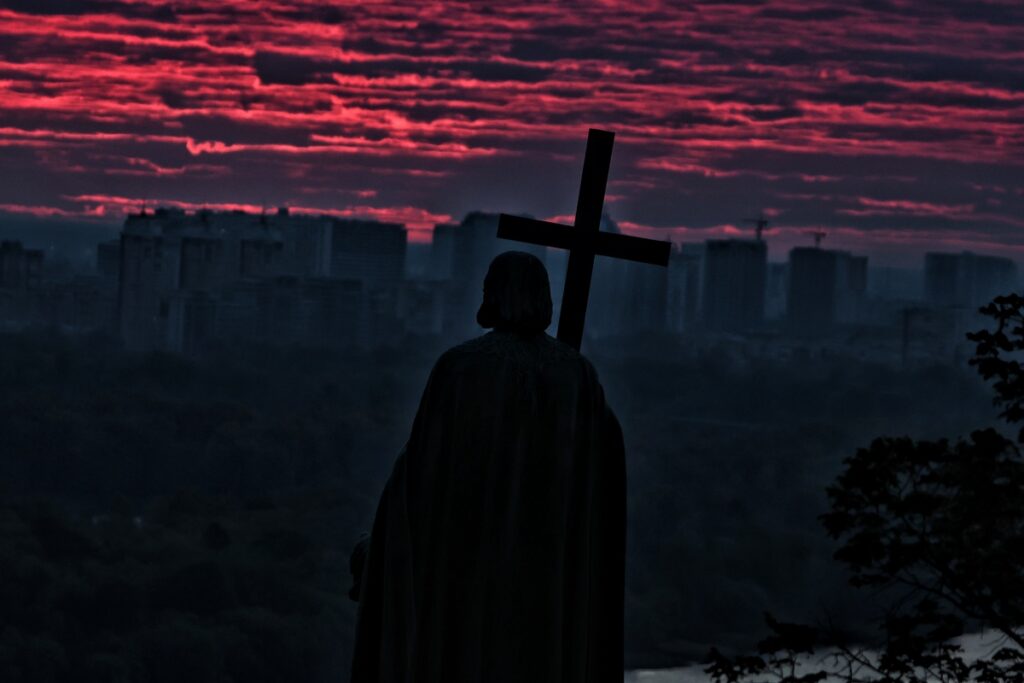
Maksym Stepanov
NUJU Information Service

 THE NATIONAL UNION OF
JOURNALISTS OF UKRAINE
THE NATIONAL UNION OF
JOURNALISTS OF UKRAINE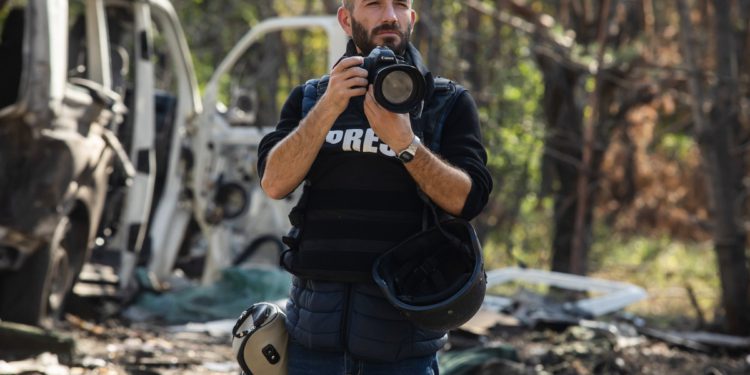


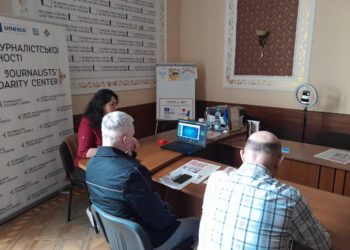
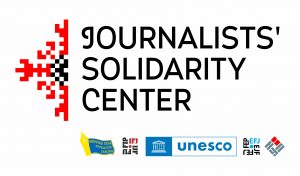
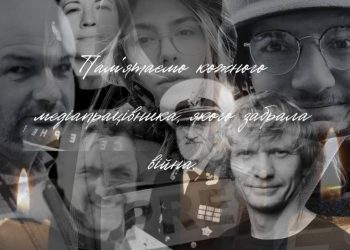











Discussion about this post